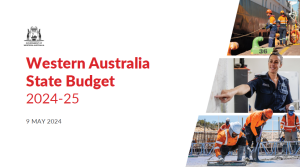The Western Australian Council of Social Service (WACOSS) and the Children’s Policy Advisory Council (CPAC) welcome the opportunity to provide input to the development of the national strategy to prevent child sexual abuse.
Vision, objective and values
Vision
Australia is committed to a future where children and young people are protected and safe from sexual abuse.
This is straightforward and makes sense. We note that there is an important balancing act in achieving this vision between the specific focus on institutional child sexual abuse in the RC recommendations, versus the higher prevalence and risk of child sexual abuse within families and communities. Our concern is that, if Governments and agencies simply take a literal and tick-box approach to implementing the RC recommendations, this may skew the focus and resources as well as the design of child safety systems, processes and supports away from those area of highest risk.
Creating a future where children and young people are safe and protected makes sense as a vision and an aspiration, but also needs to be balanced against our need to deliver justice and healing to the victims of past abuse. To achieve the cultural change and trust required to build these foundations for the future, it is imperative that historic wrongs are seen to be righted and that victims and survivors are seen to be part of the solution. This is particularly true when it comes to Aboriginal families and communities, where little has tangibly been done to address the intergenerational impacts of the Stolen Generations on parenting skills and child safety. While the trauma and the stories of injustice and mistreatment remain unresolved within families and communities we are unlikely to see the trust and engagement with public institutions and Aboriginal community organisations needed to keep children safe.
WACOSS supports the recommendation of the Parkerville submission that the vision should be more aspirational and more meaningful to children and young people, with a focus on future outcomes and prevention. We should seek to be the best (and safest) place in the world to for children and young people to grow up and thrive.
Objective
The National Strategy will reduce the risk, extent and impact of child sexual abuse and related harms in Australia.
A focus on reducing the extent and risk of child sexual abuse is also predominantly future focused, which is why it is important that we clearly articulate that reducing the impact and related harms of child sexual abuse also includes the delivery of adequate services and support to those who have been harmed or are harmed in the future. It is important to ensure the commitment to prevention, support and healing are proportionate to the risk of harm across institutional abuse versus abuse by a family member or trusted adult. This reflects the concern expressed by community service providers that the roll-out of to date has been focused on policy and regulatory measures ahead of investment in service system capacity and quality or commitment to service system redesign.
Values
We note there is some inconsistency across the six statements of ‘values’ language versus ‘outcomes’ language. We agree that it is important to highlight the underlying values to which we are all committed in responding to child sexual abuse, and to articulate how those values are then put into action to achieve the outcomes we desire. Most of the statements are in fact outcomes that reflect and embody core values.
We also note with concern that the version of the values included in the NGO consultation is different from that in the detailed strategy sent to the States and Territories for review and appears to be from an earlier version. Despite the delay in receiving the consultation paper, NGOs are being asked to give feedback on a set of values that have already been substantially changed.
Value 1 – is a good starting point that all Australians should support as a foundation for the strategy. We value and care about all Australian children, share the responsibility for keeping them safe, recognise our roles and strengths are complimentary, and commit to work together to ensure all children are safe and thrive.
Value 2 – is also expressed as an outcome not a value. We agree with the statement that the voices (and experiences) of victims and survivors are critical to the design and implementation of an effective national strategy and believe that they should be valued partners in the development of responses. We note some inconsistency in the language between 2, 3 & 4 in the language and suggested level of involvement – is it just the voice, or also the lived experience? Do we merely collect their statements and case studies, or are they partners in design, development, delivery and evaluation?
Value 3 – in addition to the comments above, we suggest this statement might be extended to include ‘young people’ as well as children.
Value 4 – in addition to the commitment to partnership and being expressed as an outcome (both discussed above) this statement also combines two different elements: cultural safety, and trauma-informed practice. Care needs to be taken that both elements are applied across ALL services, initiatives and strategies, not just those that are specifically targeted at ATSI children, families and communities. We agree that these elements are particularly important and have been historically missing in the engagement with Aboriginal families and communities, and particularly victims and survivors. We would recommend that the commitment should go further to reflect a commitment to principles of Aboriginal Family-Led Decision Making and to develop the capability and role of Aboriginal Community Controlled Organisations in delivering services and supports to Aboriginal children and families. We note there has been progress in this regard in other jurisdictions, that there are examples of best practice services and systems to draw on, and we would appreciate its inclusion in the national strategy to encourage Western Australia to catch up.
Value 5 – This is also expressed as an outcome rather than a value. It raises concern about initiatives we may need to pursue where there isn’t yet a strong body of evidence. The key point is that we value an evidence-informed approach, that we commit to collecting evidence and undertake analysis on what works to prevent (and heal) child sexual abuse, and that decision making about investment in strategies, programs and initiatives should be based on the best available knowledge. Note this proposed formulation would broaden the role of evidence in decision making to not only apply to
individual initiatives, but also across the strategy as a whole and the balance of effort across initiatives, programs, issues and locations.
As it is written, an evidence-based approach is only being applied here to prevent child sexual abuse, whereas we strongly believe it should also apply to services and support aimed to trauma and healing for victims and survivors. Hence, we suggest “…to prevent and heal…”
Value 6 – talks about harmful behaviours and behaviour change, without giving consideration to the wider context in which those behaviours occur and their underlying drivers. We strongly support an approach to early intervention with children and young people exhibiting harmful sexual behaviours as a means of both preventing harm to others and assisting them to develop into healthy and happy adults. What we value here is healthy development and wellbeing, together with healthy and meaningful personal and sexual relationships – not just an absence of inappropriate or harmful behaviour. Note there is a very strong evidential link for victims of family and domestic violence with the experience of abuse as children, and both the national strategy and the service and support systems need to be clearly linked.
Strategic priority themes
In considering the five strategic priority themes we suggest there are two different questions to consider: Are these the right themes? (i.e. Do they clearly articulate the issues and priorities?) and Together do they reflect an appropriate spread of activities? (Are there gaps? What is the balance of effort against need?)
Theme 1, “Education and building child safe cultures,” covers the work and recommendations around prevention and early intervention, community awareness and broader cultural change. It also covers much of the regulatory and governance work around implementation of child safe standards, complaints and oversight (noting that these requirements will also apply to services for victims (theme 2), offenders (theme 4) and those exhibiting harmful sexual behaviours (theme 3).
Again, the concern expressed by service providers in community consultations has been a perceived focus on regulation, governance and oversight ahead of investment in developing and delivering more accessible and effective trauma-informed services and supports. Articulating separate themes on services and support for victims, offenders and those with harmful behaviours is likely to be welcome if it then leads to addressing concerns about both the balance of effort and the sequencing of responses and initiatives. Hence, the value of the theme will be the extent to which the actions under it deliver resources that result in effective outcomes, and the extent jurisdictions are held accountable for doing so.
It should also be noted themes 2 “Supporting and empowering victims and survivors” and 3 “Support services for children exhibiting harmful sexual behaviours” use the language of ‘support services’ or ‘supporting and empowering’ rather than identifying particular outcomes (versus education and culture change as in theme 1, or prevention as in theme 4). This raises concerns about what might be considered an adequate or effective level of support and whether there are measurable outcomes and targets. We strongly recommend that the strategy should be committing to ‘heal’ as well as empower victims and survivors, and also to deliver justice.
Theme 5, “Offender prevention and intervention”, with its commitment to improve the evidence base is an important and welcome inclusion. However, there could be an issue with the way in which themes are used to direct and organise actions and work programs to implement the RC recommendations. We note that the consultation paper says that actions will fit under each theme of the National Strategy. Consideration about improving the evidence base (and hence implementation of Value 5) needs to be built into all programs and workplans at a fundamental level – not something that is done separately, or only considered afterwards as part of evaluation. Hence there is a need for an integrated research program on education, prevention and cultural change (theme 1); one on what works best to support, heal and empower victims and survivors (theme 2); one on understanding and intervening on the causes of harmful sexual behaviours to deliver healthy development and relationships (theme 3); and one on understanding the causes of offender behaviour and effective interventions to prevent some victims of child abuse from becoming offenders (theme 4).
We note that the consultation paper says the five themes arose from the concerns expressed by non-government stakeholders in consultation processes to date. Hence they reflect the ongoing concerns continuing to be raised in community consultations around public awareness and cultural change, reducing the stigma of reporting and seeking help, the need for an accessible, responsive and trauma-informed service system, and the need for an effective research agenda on underlying causes and effective responses. From a community sector perspective we would like to see how national and state government commitments against the national action will be reported against these themes in a way that enables us to track commitments to invest in improving service quality, address unmet need, close gaps in service delivery or reduce wait times. Further, we would like to see how the voices of children and young people, victims and survivors, Aboriginal communities and organisations are included in evaluation (in line with the discussion of themes 2,3 & 4 above). Hence, when it comes to theme 5, our commitment to evidence-based practice should not only look in isolation at the effectiveness of particular service models, but also at the level of service delivery, its adequacy and accessibility across the service system relative to cohort and locational needs.
Working in partnership
The best way to engage with stakeholder groups is likely to be a combination of (a) ensuring that existing related peaks, advocacy organisations and support networks are engaged and have the capacity to support members and consultation processes; and (b) ensure there are open and accessible processes and engagement opportunities for all stakeholders that are welcoming, safe and culturally secure. In some areas there may be a need for national and state level support to enable the formation or to build the capacity of those peak bodies, groups and networks.
Key stakeholders must include Create Foundation, Family Inclusion Network, SNAICC, Child and Youth Policy Councils (eg YACWA, AYAC), Aboriginal peak bodies and ACCO networks (Noongar Family Safety & Wellbeing Council, ARNJA, AHCWA), survivor networks (Stolen Generations associations, Yokai, SAMSN), service peaks and networks (CAFAWA) and research centres (ACCP, PERCAN, ACF). The limited consultation period and lack of clarity around process has not permitted us to actively reach out and engage these networks in this consultation beyond sharing the consultation paper through our newsletter and networks and encouraging engagement via CPAC.
When it comes to engagement processes, we recommend a mix of open and targeted engagement mechanisms, with some effort put into outreach in under-represented areas including regional and remote. Best practice can include developing consultation plans and events in partnership with peaks, independent or community-based facilitation, and resourcing capacity to document discussions, follow up stakeholders or write up submissions where it is lacking. The issue of how best to do this with Aboriginal stakeholders, advocacy organisations and Aboriginal Community-Controlled Organisations (ACCOs) has been a focus of concern in WA in recent years, given the over-representation of Aboriginal children in the child protection and justice systems, higher proportions of stolen generations parents and carers, and the comparative lack of their role and resourcing in service delivery, decision making and governance in comparison to other jurisdictions.
We recommend some key documents arising from these activities:
- Care and Protection System Co-design report: Moving to child safety and family and community wellbeing
- Partnering with Aboriginal Community Controlled Organisations to deliver trusted services with stronger outcomes
- WACOSS Co-design toolkit
Engagement with individual themes and actions
WACOSS does not belong to one of these stakeholder groups, but as the peak body for the community services sector in WA we play a role in supporting and engaging these stakeholders, their representative groups and networks, and convene the WA Peaks Forum. WACOSS also convenes the Children’s Policy Advisory Committee which brings together child and family service providers, campaigns and advocacy organisations to coordinate engagement and policy development.
In relation to the request at (6a) for representative groups to nominate particular themes and become involved in individual actions, WACOSS and CPAC have an interest in all five themes, and have the capability to direct communications to and facilitate engagement with relevant stakeholders and networks.




